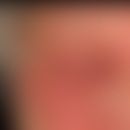Synonym(s)
DefinitionThis section has been translated automatically.
Scillae bulbus, also known as sea onion, is a drug monographed by Commission E, which consists of the dried leaves of the bulb of white onion varieties cut into strips. It is used in herbal medicinal products for the treatment of a mild form of heart failure, among other things.
HMPC: not processed
ESCOP: not processed
Commission E-monograph: mild forms of heart failure - also with reduced renal performance.
Empirical medicine: digitalis refractory cases, bradycardic form of heart failure, edema
IngredientsThis section has been translated automatically.
Scillae bulbus contains around 30 heart-active glycosides of the budadienolide type, the main glycosides being scillaren A and proscillaridin a. Scillae bulbus also contains flavonoids, anthocyanins and mucilage (glucogalactans) and chelidonic acid.
You might also be interested in
EffectsThis section has been translated automatically.
The glyosides wirekn positive inotropic and negative chronotropic. Scillae bulbus lowers the increased left ventricular end diastolic pressure and pathologically increased venous pressure. The onset of action is rapid.
Field of application/useThis section has been translated automatically.
Scillae bulbus is used for a mild form of heart failure (stage I-II NHHA) and edema.
DosageThis section has been translated automatically.
The average daily dose is 0.1 to 0.5 g of adjusted sea onion powder DAB.
Undesirable effectsThis section has been translated automatically.
Nausea, vomiting, stomach problems, diarrhoea and an irregular pulse may occur.
ContraindicationThis section has been translated automatically.
In case of existing potassium deficiency or therapy with digitalisglycosides should be avoided.
InteractionsThis section has been translated automatically.
With a simultaneous administration of quinidine, saluretics, laxatives or a long-term therapy with glucorticoids, the effect and side effects can be intensified.
Trade namesThis section has been translated automatically.
Finished preparations are not known. Combination preparations with Adonisherb (Adonidis herba)+ Lily of the valley herb(Convalleriae herbae) + Sea onion(Scillae bulbus) +Oleander leaves are widely used (Miroton solution®). Unless otherwise prescribed, adults and adolescents over 12 years of age take 20 - 30 drops 1 - 3 times daily (max. 60 drops daily).
Note(s)This section has been translated automatically.
According to the DAB, the use of sea onion powder can no longer be recommended today, as there are numerous chemical-synthetic drugs which, if relatively well tolerated, can improve the prognosis of heart failure patients.
Finished preparations with sea onion powder are no longer available on the market today.
LiteratureThis section has been translated automatically.
- Kaller, H et al. (1956) A German Bulbus Scillae standard preparation. Arzneimittelforschung 6:736-737.
- Schilcher H (ed.) in, Leitfaden Phytotherapie, Urban & Fischer Verlag (2016) Munich, pp. 223 f.
- Wiesenauer M (2008) PhytoPraxis. Springer Verlag, Heidelberg p.145
- Wenigmann M (2017) Phytotherapy medicinal drugs, phytopharmaceuticals, application. Urban & Fischer, pp.158-159
- https://arzneipflanzenlexikon.info/meerzwiebel.php




